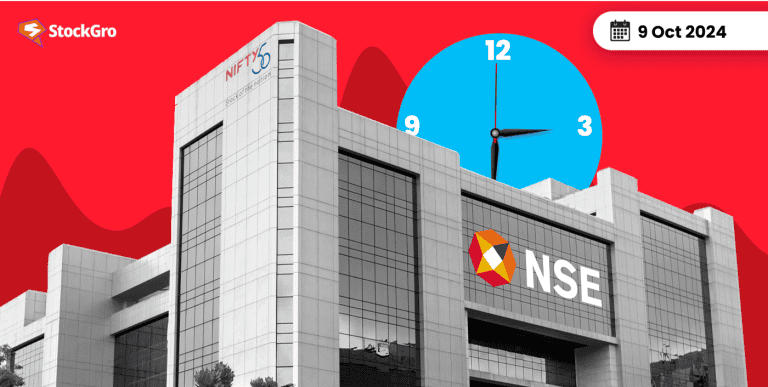
India’s financial system is anchored by a diverse set of institutions, playing a critical role in the nation’s economy. Publicly owned banks, privately held entities, foreign lenders, and smaller finance institutions work together to manage credit flow, support businesses, and provide savings solutions to millions.
This intricate structure helps drive both national growth and financial inclusion, catering to different segments of the economy. To understand how this dynamic sector can be an investment opportunity, let’s explore why investing in banking stocks might be worth considering.
Indian banking sector
In recent years, Indian financial institutions have experienced substantial growth in their overall financial assets. The banking sector features 13 public banks, 21 private, 44 foreign, and 12 small finance institutions. The apex bank of the country is the RBI- Reserve Bank of India.
Public institutions, which dominate the landscape, reported ₹1,861.72 billion in assets as of 2024. Meanwhile, privately managed players are quickly gaining ground, holding ₹1,264.28 billion.
While government-backed institutions still lead in size their private counterparts are steadily closing the gap by focusing on innovation and consumer-driven services, shaking up the competitive landscape.
One of the most dynamic changes in the industry has been its embrace of technology. UPI-Unified Payments Interface and mobile banking have revolutionised how transactions are conducted across the country. Since 2022, nearly half of global digital transactions have originated from India, marking its dominance in the sector.
The adoption of digital services has accelerated, especially in underserved rural areas, where all new bank accounts are now being opened via digital channels. This shift signals a new era where technology is at the forefront of banking operations.
You may also like: Kiosk banking: A convenient way to access banking services in rural India
Why consider investing in banking stocks?
Banking stocks present unique opportunities, especially within India’s dynamic financial game. Here’s a closer look at the key factors:
Pillar of economic development
Financial institutions are deeply integrated into the country’s economic framework. When national economic activities surge, these institutions benefit from increased demand for their offerings, which positively impacts their bottom line..
Exposure to multiple industries
When you invest in these entities, you gain indirect access to numerous sectors. Banks provide loans to companies across industries like agriculture, manufacturing & technology. This broad exposure reduces the risk tied to any one particular sector, helping to create a more balanced investment portfolio.
Regulatory backing
The RBI plays a significant role in maintaining the sector’s stability. Through policy adjustments, liquidity support, and regulatory oversight, the RBI ensures the environment remains conducive for banking operations. For those investing, this creates an additional level of security and confidence.
Also read: Ten Basic Terminologies That You Should Know About Indian Banking
Key factors to evaluate when looking at bank stocks
When assessing banking stocks, it’s essential to look beyond surface-level metrics & check how a bank compares to its peers within the industry. . Here are key aspects to consider for a well-rounded evaluation:
- Loan quality and risk: A crucial factor to watch is how effectively a bank manages its credit risk. Non-performing assets or NPAs are loans that fail to generate returns due to defaults. A low NPA percentage indicates prudent lending practices and strong risk control. High levels, however, might signal potential trouble in the bank’s loan book.
- Interest income efficiency: Banks make their money primarily through the interest rate difference between loans and deposits. This difference is captured by Net Interest Margin. A higher margin means the institution is optimising its core lending activities, which is a positive sign for long-term growth.
- Lending efficiency: The LDR–loan-to-deposit ratio– indicates how much of the available deposits are being used to fund loans. A balanced LDR suggests that the bank is effectively deploying its resources without taking on excessive liquidity risks. A low ratio may imply untapped lending potential, while a very high one could expose the bank to cash flow issues.
- Return on investment: Return on Equity/ ROE% is a critical metric to understand how well a bank uses shareholder funds to generate profits. A higher ROE signifies better financial management and more efficient use of equity capital, making it an important factor for those looking to invest.
- Strategic market positioning: Consider the bank’s market presence and target audience. Large-scale institutions often diversify their offerings across regions and industries, spreading risk. In contrast, niche or regional banks may focus on specialised areas, where they can outpace larger competitors. Understanding where the bank fits within the broader market is essential for gauging its growth prospects.
To know more: NPA: The tipping point in banking and economy
Notable banking stocks in India
As of 8 October-2024, these are the top five banking stocks by market capitalisation. But please note, this measure highlights only their current size, it doesn’t necessarily guarantee future growth or stability.
A company’s market worth provides only a snapshot, often missing critical insights into its financial health. To assess a bank’s long-term potential, factors as mentioned above, must also be taken into account, offering a more complete view beyond just market ranking.
Below is a brief overview of the financial standing of the top five bank stocks. Due to the bank’s important role in India’s economy, these top banks are regulars of Nifty50.
| Metrics | HDFC Bank | ICICI Bank | SBI | Kotak Mahindra | Axis Bank |
| Market cap (₹ Cr) | 1258631.14 | 872385.02 | 698719.94 | 359116.07 | 356524.63 |
| Sales (₹ Cr) | 314027.08 | 166991.68 | 455970.95 | 59204.49 | 117671.83 |
| Net profit ( (₹ Cr) | 17188.05 | 12462.81 | 20094.36 | 7448.16 | 6467.13 |
| P/E ( (₹ Cr) | 18.46 | 19.25 | 9.59 | 19.27 | 13.34 |
| Debt / Equity | 6.81 | 6.45 | 13.51 | 4 | 8.25 |
| ROE % | 17.14 | 18.8 | 17.34 | 15.06 | 18.4 |
| 1Yr return % | 8.89 | 31.75 | 33.56 | 4.89 | 15.76 |
| 5Yrs return % | 6.58 | 23.89 | 25.19 | 2.62 | 11.38 |
#1 HDFC Bank
As of March-2024, the bank holds a 15.2% share of India’s advances market, making it the largest private sector lender. Its merger with the parent company HDFC Limited in July-2023 expanded its operations into sectors like insurance, asset management, and housing finance.
#2 ICICI Bank
As the country’s second-largest private lender, it serves a broad spectrum of customers, from individuals to businesses. Beyond traditional banking, its influence spans insurance, housing finance, and treasury operations. In Q1 FY25, the bank reported a 7.3% growth in net interest income and a 14.6% rise in profit after tax
#3 State Bank of India
It is the largest public sector lender, and has assets totalling ₹61 trillion as of March 2024. With a vast network of over 22.5K branches and 63.5K ATMs, it serves 50 crore customers across the country. SBI has diversified into areas like insurance, mutual funds, and credit cards.
#4 Kotak Mahindra Bank
It is the fourth largest private sector bank. Known for its strong vehicle financing arm, the bank reported a consolidated profit of ₹7448 crore in Q1FY25, with a return on equity of 22.04%. Its operations extend into stockbroking, insurance, and asset management.
#5 Axis Bank
As per advances and deposits, Axis is the third largest bank. In Q1 FY25, its Common Equity Tier 1 / CET-I ratio stood at 14.06%, showcasing its solid financial foundation. With a return on assets of 1.65%, Axis has demonstrated operational efficiency. The bank has been expanding its corporate lending while maintaining a healthy net interest margin above 4%.
Should you invest in bank stocks?
Several important aspects need to be weighed.
- The rise of fintech companies presents a significant challenge, as traditional institutions face pressure to evolve.
- Compliance requirements are also becoming more demanding, especially with heightened regulations around data security and privacy.
- The growing risk of cyber threats forces these institutions to strengthen their defences, which can strain resources.
While financial stocks present growth potential, the evolving landscape and inherent challenges make careful consideration essential. Balance these factors before deciding if they align with your investment strategy.
Bottomline
The sector offers both potential and challenges. Banks, being crucial to economic development, can provide promising returns, but factors like regulatory demands and rising cybersecurity risks should be carefully considered.
Whether such investments align with your portfolio depends on your specific financial goals, time frame, and comfort with risk. Tailor your choices to fit these criteria.

